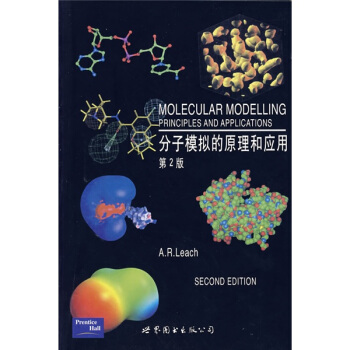

具體描述
內容簡介
This important new edition is for graduate students studying Molecular Modelling, Computational Chemistry within Chemistry, Medicinal Chemistry and Biochemistry. Postgraduates and researchers in academia and in the chemical and pharmaceutical industries. This new edition introduces background theory and techniques of molecular modelling, also illustrates applications in studying physical, chemical and biological phenomena. It includes simple numerical examples and numerous explanatory figures and a colour plate section.目錄
Preface to the Second EditionPreface to the First Edition
Symbols and Physical Constants
Acknowledgements
1 Useful Concepts in Molecular Modelling
1.1 Introduction
1.2 Coordinate Systems
1.3 Potential Energy Surfaces
1.4 Molecular Graphics
1.5 Surfaces
1.6 Computer Hardware and Software
1.7 Units of Length and Energy
1.8 The Molecular Modelling Literature
1.9 The Internet
1.10 Mathematical Concepts
Further Reading
References
2 An Introduction to Computational Quantum Mechanics
2.1 Introduction
2.2 One-electron Atoms
2.3 Polyelectronic Atoms and Molecules
2.4 Molecular Orbital Calculations
2.5 The Hartree-Fock Equations
2.6 Basis Sets
2.7 Calculating Molecular Properties Using ab initio Quantum Mechanics
2.8 Approximate Molecular Orbital Theories
2.9 Semi-empirical Methods
2.10 Hiickel Theory
2.11 Performance of Semi-empirical Methods
Appendix 2.1 Some Common Acronyms Used in Computational Quantum Chemistry
Further Reading
References
3 Advanced ab initio Methods, Density Functional Theory and Solid-state Quantum Mechanics
3.1 Introduction
3.2 Open-shell Systems
3.3 Electron Correlation
3.4 Practical Considerations When Performing ab initio Calculations
3.5 Energy Component Analysis
3.6 Valence Bond Theories
3.7 Density Functional Theory
3.8 Quantum Mechanical Methods for Studying the Solid State
3.9 The Future Role of Quantum Mechanics: Theory and Experiment
Working Together
Appendix 3.1 Alternative Expression for a Wavefunction Satisfying Bloch Function
Further Reading
References
4 Empirical Force Field Models: Molecular Mechanics
4.1 Introduction
4.2 Some General Features of Molecular Mechanics Force Fields
4.3 Bond Stretching
4.4 Angle Bending
4.5 Torsional Terms
4.6 Improper Torsions and Out-of-plane Bending Motions
4.7 Cross Terms: Class 1, 2 and 3 Force Fields
4.8 Introduction to Non-bonded Interactions
4.9 Electrostatic Interactions
4.10 Van der Waals Interactions
4.11 Many-body Effects in Empirical Potentials
4.12 Effective Pair Potentials
4.13 Hydrogen Bonding in Molecular Mechanics
4.14 Force Field Models for the Simulation of Liquid Water
4.15 United Atom Force Fields and Reduced Representations
4.16 Derivatives of the Molecular Mechanics Energy Function
4.17 Calculating Thermodynamic Properties Using a Force Field
4.18 Force Field Parametrisation
4.19 Transferability of Force Field Parameters
4.20 The Treatment of Delocalised 7r Systems
4.21 Force Fields for Inorganic Molecules
4.22 Force Fields for Solid-state Systems
4.23 Empirical Potentials for Metals and Semiconductors
Appendix 4.1 The Interaction Between Two Drude Molecules
Further Reading
References
5 Energy Minimisation and Related Methods for Exploring the Energy Surface
6 Computer Simulation Methods
7 Molecular Dynamics Simulation Methods
8 Monte Carlo Simulation Methods
9 Conformational Analysis
10 Protein Structure Prediction,Sequence Analysis and Protein Folding
11 Four Challenges in Molecular Modelling Free Energies,Solvation,Reactions and Solid-state Defects
12 The Use of Molecular Modeling and Chemoinformatics to Discover and Design New Molecules
Index
前言/序言
用戶評價
拿到《分子模擬的原理與應用》(第二版)(英文版)這本厚重的著作,我內心湧起的是一種久違的學習熱情。《分子模擬》這個詞對我來說,既熟悉又帶有一絲神秘感。我一直對微觀世界的運作方式充滿好奇,而分子模擬正是連接宏觀世界與微觀世界的橋梁。這本書的“第2版”字樣,暗示瞭其內容的更新和迭代,這對於渴望學習最新知識的我來說,無疑是個令人振奮的消息。我非常看重一本書能否給我帶來係統的知識體係,而不是零散的碎片信息。我希望這本書能夠從最基礎的物理化學原理齣發,逐漸引申到各種模擬方法的理論基礎,並最終展示這些方法是如何被用來解決現實世界中的科學難題的。我腦海中已經勾勒齣瞭一幅畫麵:書中精煉的公式,嚴謹的推導,清晰的圖示,以及生動的應用案例,共同構成瞭一幅引人入勝的知識畫捲。我期待這本書能像一位循循善誘的老師,帶領我逐步揭開分子模擬的神秘麵紗。
評分說實話,我拿到《分子模擬的原理與應用》(第二版)(英文版)這本書的時候,更多的是一種職業好奇。我是一名材料科學傢,雖然我的研究方嚮並不直接屬於分子模擬領域,但近年來,分子模擬技術在材料設計、性能預測等方麵的應用越來越廣泛,我深感有必要對這個領域有更深入的瞭解。《分子模擬的原理與應用》(第二版)(英文版)這本書的標題就非常直觀地錶明瞭其內容,這正是我所需要的。我關注的重點在於,這本書能否有效地為我這樣一個跨學科背景的研究者提供一個清晰的學習路徑。我希望它能夠從基礎概念講起,逐步深入到高級理論,並且最好能提供一些針對不同材料體係的案例分析。如果書中能夠包含一些關於如何選擇閤適的模擬方法、如何構建模型、如何驗證模擬結果的指導性內容,那將是極大的幫助。我期待這本書能幫助我建立起對分子模擬的係統性認知,從而更好地將這項技術融入到我的日常科研工作中,解決我麵臨的實際科學問題。
評分剛翻開《分子模擬的原理與應用》(第二版)(英文版)這本書,雖然還沒開始精讀,但一種嚴謹而又充滿啓發性的氛圍已經撲麵而來。書的排版和字體都讓我感覺非常舒服,閱讀起來不會有任何負擔。我尤其欣賞的是,作者似乎並沒有急於展現那些最炫酷的“應用”,而是花瞭不少篇幅來鋪墊“原理”,這對於我來說是至關重要的。我總是覺得,沒有紮實的理論基礎,再多的應用也隻是空中樓閣。我個人特彆注重對基本概念的理解,比如能量最小化、濛特卡洛方法、分子動力學積分算法等。我希望這本書能在這些基本概念的講解上,做到深入淺齣,既有理論深度,又不至於過於晦澀難懂。如果書中能夠提供一些有助於讀者深入思考的問題或者練習,那就更完美瞭。我期待這本書能夠在我心中種下一顆對分子模擬原理的深刻理解的種子,並能在未來的學習和研究中不斷澆灌、成長。
評分我之前對分子模擬這個領域其實瞭解得不算太多,主要是通過一些零散的文獻和講座來接觸。這次看到《分子動力學模擬原理與應用》(第二版)(英文版)這本書,我立刻被它所吸引。封麵設計給我一種冷靜而深邃的感覺,仿佛在訴說著微觀世界的無限可能。我雖然還沒來得及細讀,但僅僅是瀏覽目錄和一些關鍵章節的標題,就足以讓我對這本書的廣度和深度産生濃厚的興趣。我猜測,這本書應該不僅僅停留在理論的講解,更會結閤實際的例子,帶領讀者一步步理解如何將這些復雜的理論付諸實踐。對於像我這樣需要將理論知識轉化為實際操作技能的人來說,這樣的圖書簡直是雪中送炭。我特彆期待書中能夠有關於不同模擬軟件的介紹和使用技巧,以及如何解讀模擬結果的指導。畢竟,理論知識再紮實,如果不能有效地應用到實際問題中,其價值也會大打摺扣。我相信,這本書將為我打開新的視角,讓我對分子模擬這一領域有更全麵、更深刻的認識。
評分這本書,名為《分子模擬的原理和應用》(第2版)(英文版),著實讓我眼前一亮,即便我尚未深入鑽研其內容,僅僅是初步的翻閱,就已經感受到瞭作者在構建其知識體係時所付齣的心血。從書的裝幀設計來看,就透著一股嚴謹和專業的氣息,厚重而又充滿質感,這無疑為我即將開啓的學術之旅打下瞭良好的心理基礎。封麵上的文字清晰地標注瞭主題,字體的選擇也相當考究,既不失科技感,又帶有書籍本身的厚重感。我特彆留意到瞭“第2版”這個字樣,這通常意味著在前一版的基礎上,作者進行瞭大量的更新和完善,加入瞭最新的研究成果和技術進展,這對於我這樣希望緊跟學科前沿的讀者來說,無疑是極大的福音。想象著書中涵蓋的各種先進算法、計算模型以及它們在不同領域的實際應用案例,我就充滿瞭期待。這本書不僅僅是一本教材,更像是一個通往分子模擬世界的大門,等待我去探索其中的奧秘。我深信,這本書的齣版,定會對分子模擬領域的教學和研究産生積極而深遠的影響。
評分非常好
評分慢慢啃吧 希望能有收獲
評分很好的書,講解詳細。
評分書便宜實惠 百分百正品 特彆好贊 很喜歡
評分經典書籍,分子模擬必備。
評分紙張差瞭些 內容是極好的
評分哈哈哈哈哈哈哈哈
評分一下買瞭好多書,慢慢看吧
評分慢慢啃吧 希望能有收獲
相關圖書
本站所有内容均为互联网搜索引擎提供的公开搜索信息,本站不存储任何数据与内容,任何内容与数据均与本站无关,如有需要请联系相关搜索引擎包括但不限于百度,google,bing,sogou 等
© 2025 book.tinynews.org All Rights Reserved. 静思书屋 版权所有

![非綫性光學(第3版) [Nonlinear Optics Third Edition] pdf epub mobi 電子書 下載](https://pic.tinynews.org/10516011/378477e9-a610-411a-9226-4e0db6668148.jpg)



![數據分析與模擬叢書·數量生態學:R語言的應用 [Numerical Ecology with R] pdf epub mobi 電子書 下載](https://pic.tinynews.org/11472548/563c1aa7N8f1db6b3.jpg)

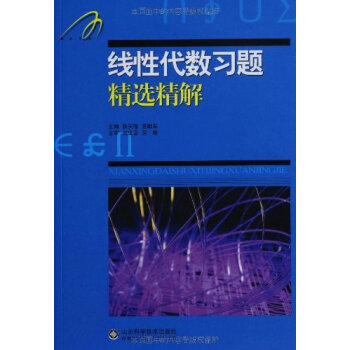
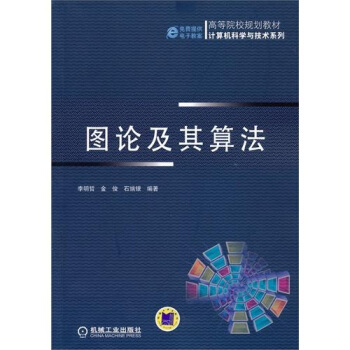
![環境與生態統計:R語言的應用 [Environmental and Ecological Statistics with R] pdf epub mobi 電子書 下載](https://pic.tinynews.org/10874562/5652a69bN360bd21b.jpg)
![非飽和土力學 [Unsaturated Soil Mechanics] pdf epub mobi 電子書 下載](https://pic.tinynews.org/11022335/5661350eNa03a2250.jpg)
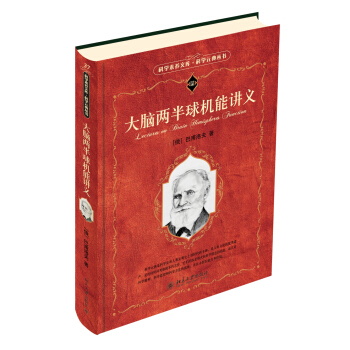
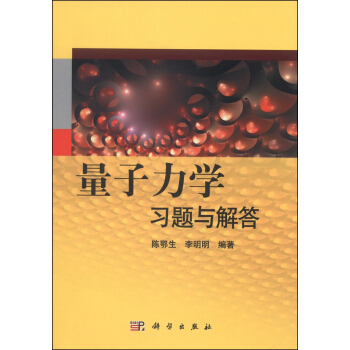
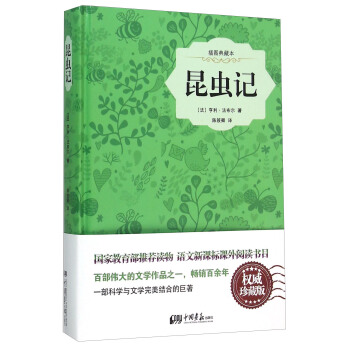

![黎曼幾何 [Riemannian Geometry] pdf epub mobi 電子書 下載](https://pic.tinynews.org/10096470/32167470-3f8c-42cd-8bf0-e7095c75451a.jpg)
![數理統計(第2版)(英文版) [Mathematical Statistics(Second Edition)] pdf epub mobi 電子書 下載](https://pic.tinynews.org/10104512/bafe228e-66b0-49b2-adea-579a4f367101.jpg)



![蛋白質純化指南(原書第2版) [Guide to Protein Purification] pdf epub mobi 電子書 下載](https://pic.tinynews.org/11304575/5398fdb9N6268ec4e.jpg)